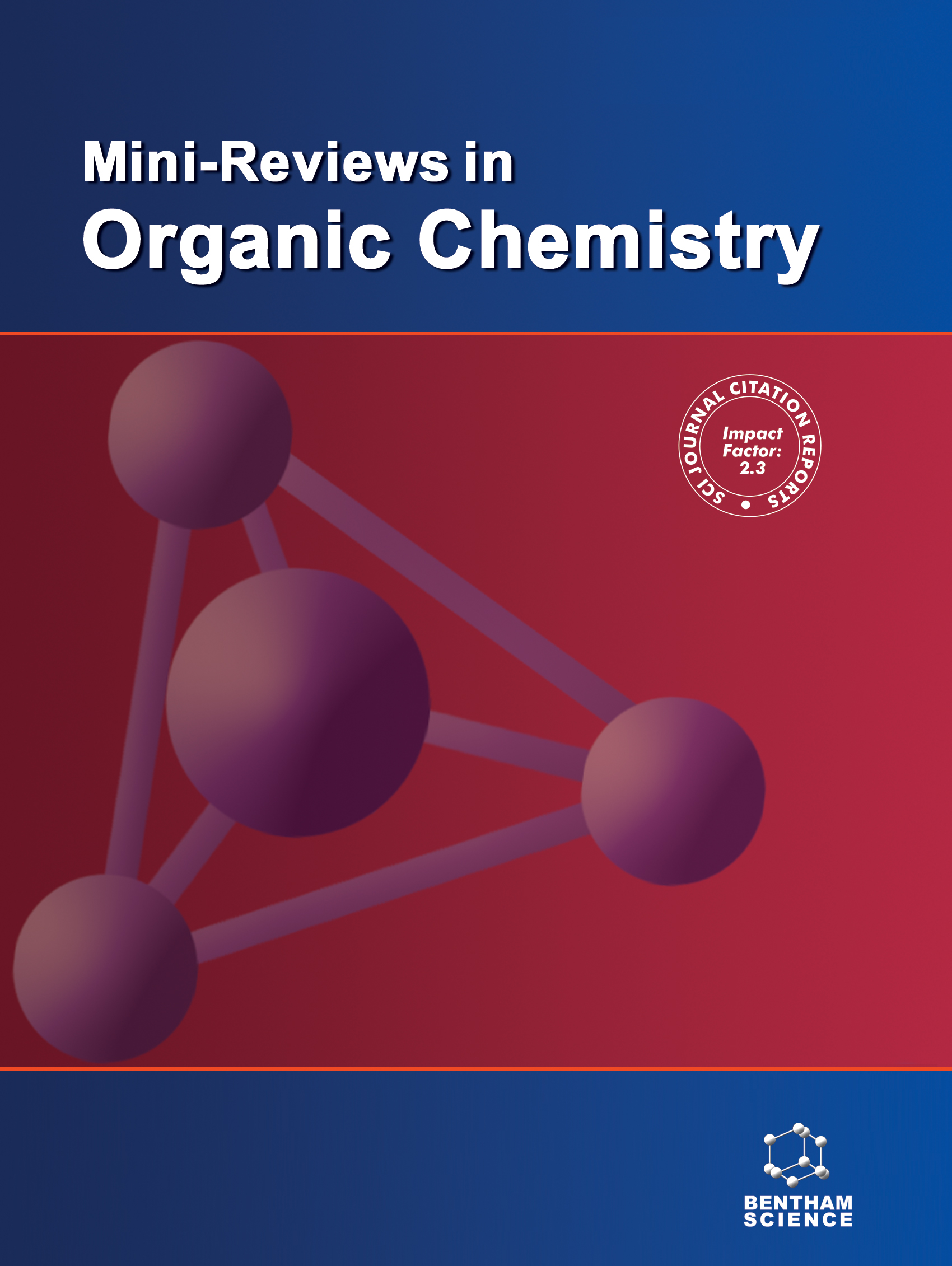- Home
- A-Z Publications
- Mini-Reviews in Organic Chemistry
- Previous Issues
- Volume 15, Issue 6, 2018
Mini-Reviews in Organic Chemistry - Volume 15, Issue 6, 2018
Volume 15, Issue 6, 2018
-
-
Progress in the Synthesis and Modification on Ginsenosides
More LessAuthors: Li Huang, Cheng Zou, Yunhuan Liu, Rui Li, Wenyue Duan, Runan Du and Weimin YangGinsenosides present various application in many areas, however, considering that the preparation of natural ginsenosides is comparatively in straitened circumstances, and not conducive to industrial production; the chemosynthesis and structural modification on natural ginsenosides with high yield and ready availability are significant in the discovery of new active ingredients and industrialization. Therefore, restriction on t Read More
-
-
-
Imidazole and Pyrazole: Privileged Scaffolds for Anti-Infective Activity
More LessAuthors: K. Tabassum, P. Ekta and P. KavitkumarHeterocyclic scaffolds like imidazole and pyrazole are attractive options to medicinal and synthetic chemists for the development of drugs. Nature utilizes the unique type of imidazole ring in numerous biological molecules such as histamine, vitamin B12, deoxyribonucleic acid (DNA) and haemoglobin for exerting various biological functions. This shows that the imidazole ring is vital to many physiological processes and hen Read More
-
-
-
Recent Advance of Allylic Alcohol Reagents in Organic Synthesis
More LessAuthors: Jian Zhang, Jianhua Liao, Yi-Fei Wei, Gengjinsheng Cheng and Renshi LuoAllylation reaction has been considered to be the most intriguing means for building collections of functionalized allylic compounds. The application of allylic alcohols for coupling reaction is complicated and typically summarized as four types such as they act as: allylation reagents, aldehyde/ ketone sources, allylic ether reagents, and as allylic alcohol sources. The molecular insights enunciated herein allude to abundant opport Read More
-
-
-
Recent Advances on Catalysts and Systems for the Oxidation of Thiophene Derivatives in Fuel Oil with Molecular Oxygen
More LessAuthors: Yongqiang Zhang and Rui WangThe oxidation of thiophene (TH) and its derivatives is vital in the oxidative desulfurization (ODS). As a safer and greener oxidant with lower cost, molecular oxygen has been employed in the ODS process as a substitution of H2O2 or other organic hydroperoxide in many research works in recent years. However, the activation of dioxygen under mild conditions is still not an easy problem to solve. In this contribution, we revi Read More
-
-
-
Carbazole: A Potent Scaffold for Antitubercular Drugs
More LessAuthors: Satheeshkumar Sellamuthu, Gopichand Gutti, Devendra Kumar and Sushil Kumar SinghThe control of Tuberculosis (TB) is becoming more challenging due to drug resistance. Therefore, there is a dire need for newer drugs to tackle the nuances of resistant strains. Many molecular scaffolds are in the pipeline against TB. Among them, carbazole has a distinct advantage over other scaffolds because of its various sources i.e. medicinal plants, coal tar, and synthesis, besides the excellent antitubercular efficacy. This r Read More
-
-
-
Biological Monitoring and Health Effects in β -Hexachlorocyclohexane (HCH) Exposed Workers
More LessBackground: Hexachlorocyclohexane (HCH) isomers have been largely employed as pesticides during the 1960's-1970's, and included into the Stockholm Convention persistent organic pollutant list in 2009 with the aim to reach their global elimination. β -HCH isomer is characterized by a strong lipophilicity, bio-persistence and potential harmful properties for human health. Dispersion of industrial processes and uncontrolle Read More
-
-
-
Ultrasound-Assisted Synthesis of Six-Membered N-Heterocycles
More LessBy Navjeet KaurThis review gives an overview of utilization of ultrasound for the synthesis of various heterocyclic compounds. Ultrasonic irradiation has been considered as an efficient methodology in many organic syntheses. With ultrasonic assistance short reaction times, good selectivity and high yields are reported. The use of ultrasound irradiation in organic reactions has been increasing rapidly in recent years.
-
Volumes & issues
-
Volume 22 (2025)
-
Volume 21 (2024)
-
Volume 20 (2023)
-
Volume 19 (2022)
-
Volume 18 (2021)
-
Volume 17 (2020)
-
Volume 16 (2019)
-
Volume 15 (2018)
-
Volume 14 (2017)
-
Volume 13 (2016)
-
Volume 12 (2015)
-
Volume 11 (2014)
-
Volume 10 (2013)
-
Volume 9 (2012)
-
Volume 8 (2011)
-
Volume 7 (2010)
-
Volume 6 (2009)
-
Volume 5 (2008)
-
Volume 4 (2007)
-
Volume 3 (2006)
-
Volume 2 (2005)
-
Volume 1 (2004)
Most Read This Month
Article
content/journals/mroc
Journal
10
5
false
en


